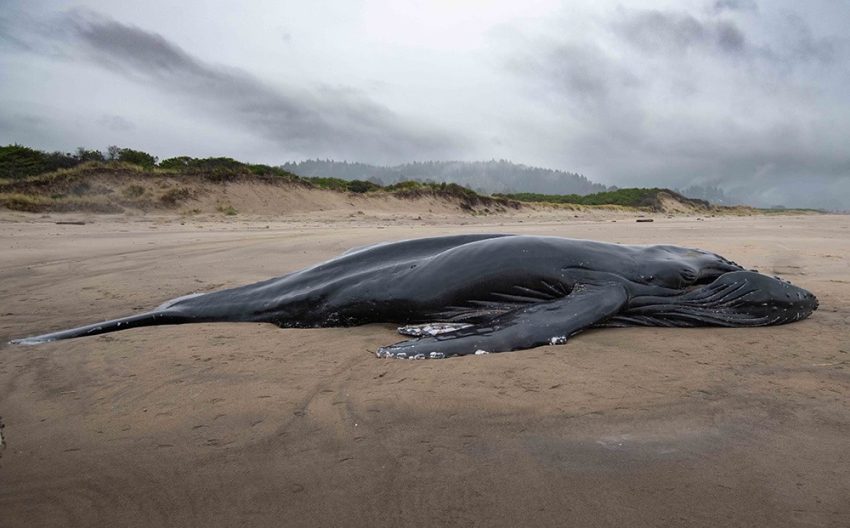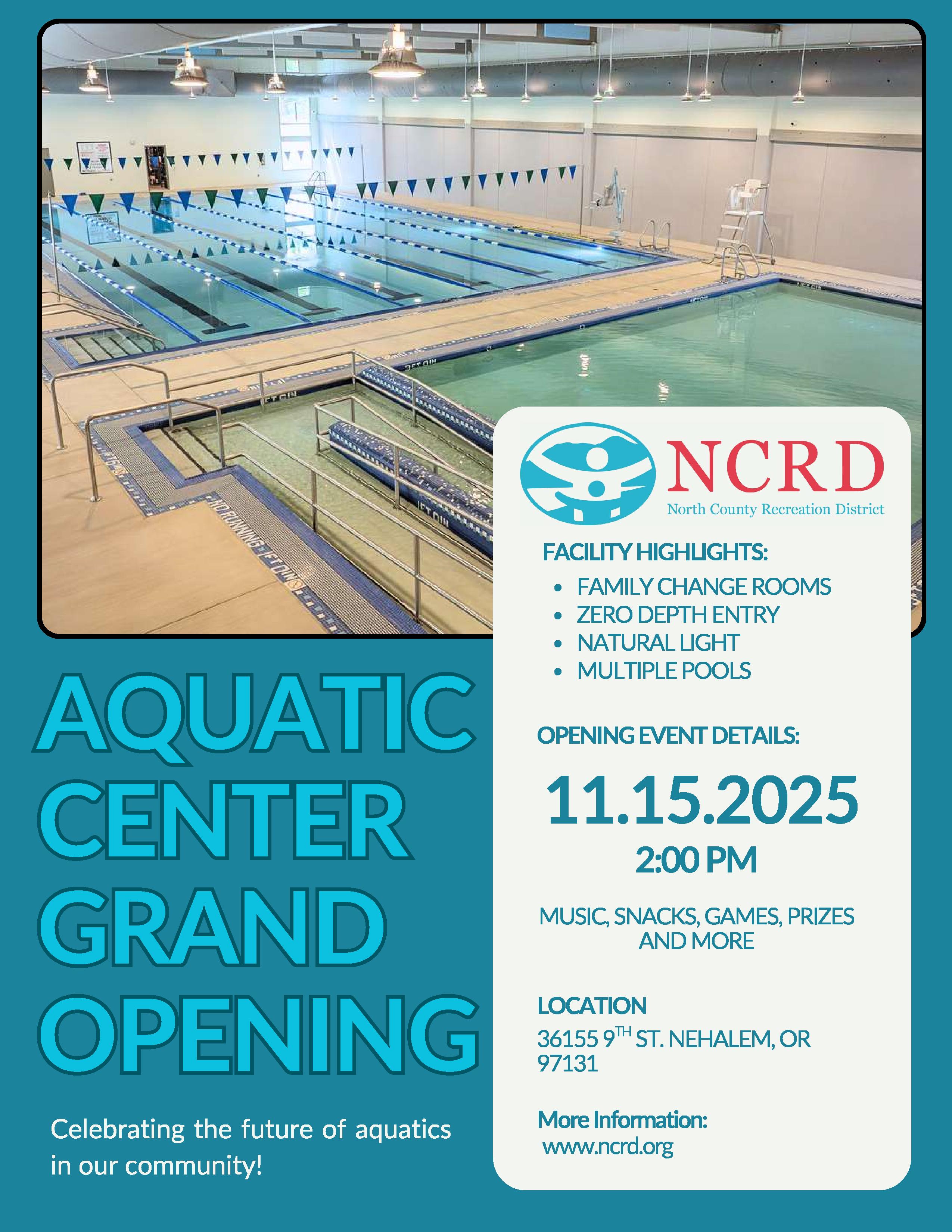EDITOR’S NOTE: With our recent storms, there have been some interesting things wash ashore. A young humpback whale first beached at Neskowin on November 4th, but reports are that the King Tides have moved to other beaches. Here’s a first-hand report about the whale, and photos from the necropsy. Thanks to Sydney Leja for sharing her photos and information.
By Sydney Leja
I was able to find the humpback whale today (November 5, 2025) just as the researchers from the Oregon Marine Mammal Stranding Network were performing a necropsy on it and collecting tissue samples. I was fortunate enough to chat with them a bit to learn what they thought happened, and thought others might like to hear what they had to say.
They estimated it to be a juvenile, about 1-2 years old. They think it died of natural causes (starvation,) since it was significantly malnourished and didnt have any signs of being attacked by killer whales, wounds from a boat strike, indications of illness or disease, etc. They said it could have been possible that it was separated from its mother too soon, and that contributed to its inability to thrive.
They would be able to determine the gender with a DNA test, but because it was laying stomach down at that moment, they weren’t able to tell until the tide would push it to its side so they could check. Internal reproductive organs were too deep- they would need more people to help access them, and they said they didnt currently have the time or means to do that.
It isn’t typical for these types of whales to be down here in Oregon right now, as its food source is located in the Arctic circle at this time of year. They said it couldn’t have been dead longer than 2 days. They collected many samples from some of the internal organs, its eye, and blubber from the right side, so if you find it, it is cut up quite a bit.
There is a smell, but it was mild, considering. I suspect it could partially be because of some of the exposed intestines that were leaking; intestines are already stinky on their own. I think the cold weather has slowed the decomposition and it will inevitably get reeeeeally gross and smelly, but for now it’s pretty mild.
Here are a few of the necropsy photos – Photos by Sydney Leja
Warning!!!: Some images may be graphic in nature!

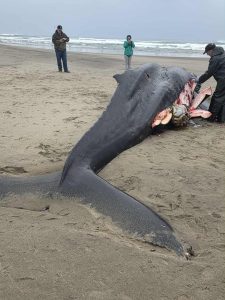
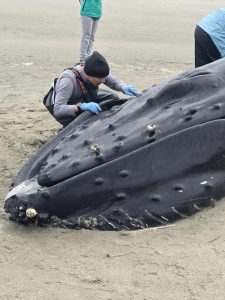
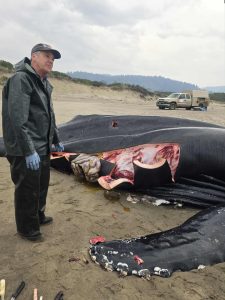

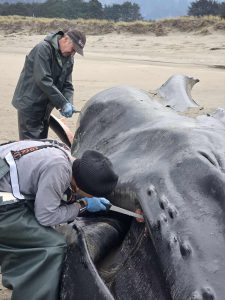

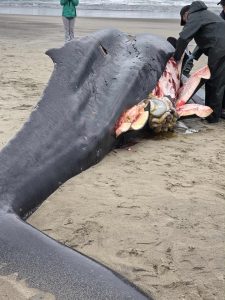
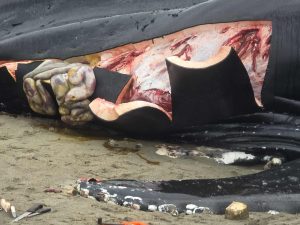
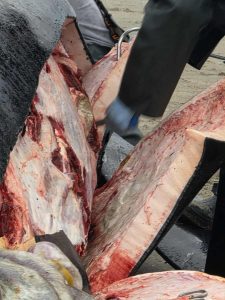
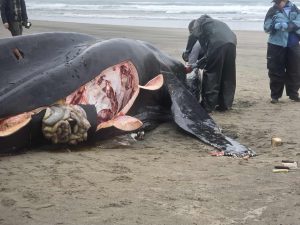
Remember that this was conducted for scientific research and ultimately aimed at improving the lives of whales, increasing human understanding, and enabling us to better protect and help them. It could potentially give us more information that might help prevent the deaths of young whales in the future.
As scientists, they are processing it in an ethical and respectful manner.
Here’s more about the young whale from Carrie Newell, marine biologist with Depoe Bay’s Whale Research Eco Excursions
A juvenile humpback whale has washed ashore in Neskowin, Oregon.
Marine Biologist Carrie Newell observed the young humpback and noted the tail fluke measured 8.5 feet wide, with adults typically measuring 12 feet wide.
The whale was approximately 28 feet long, suggesting it was likely a two-year-old.
As evident from the attached photos, the whale appeared malnourished, leading Newell to speculate that starvation was the cause of death.
Jim Rice, a stranding expert, visited the site, and Newell will provide updates if additional information becomes available.
Notably, Newell encountered a live two-year-old humpback in Depoe Bay on September 24, 2025, during a whale watching excursion and confirmed it was not the same individual.
While saddened by the whale’s demise, Newell welcomed the opportunity to share her expertise with others.
As she reflected, it is indeed the circle of life. Newell appreciates the interest in learning about humpback whales.
– Marine Biologist Carrie Newell, Whale Research Eco Excursions

